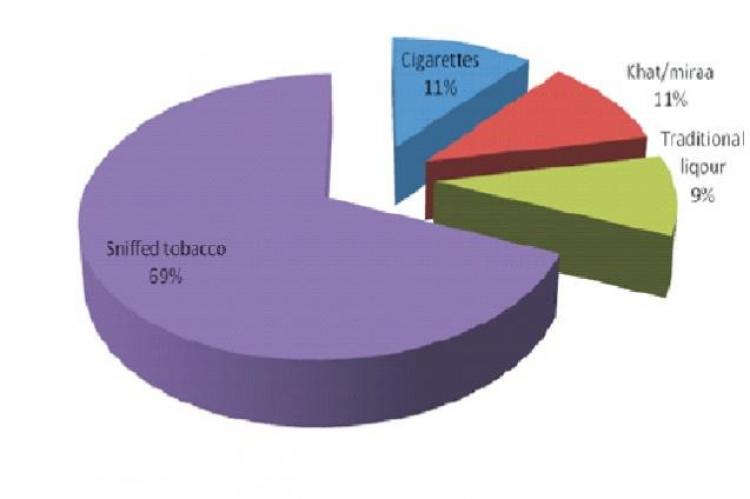Drugs and substance abuse (DSA) continue to jeopardize the health and welfare of youths throughout the world. Drugs and substances abuse, its magnitude among youths in semi-nomadic communities in Kenya is not known. The main objective of this study was to determine the type and magnitude of drug and substance abuse among youths in semi-nomadic communities Samburu County. This was a cross-sectional study with a total of 415 youths aged 15-24 getting involved in the study. Simple random sampling was used to select one Sub-county and four community health units (CHU) to participate in the study. Using systematic random sampling selection of research participants were selected. Quantitative data was analyzed using Statistical Package for Social Sciences (SPSS). From the results 54% of the respondents reported to have ever used drugs and substances before. About 52 % of the respondents reported to be currently using drugs and substances. The study revealed that 43.2% of the respondents abused drug for the first time between 18-21 years of age. Drugs and substances commonly abused included miraa (17.3%), sniffed tobacco (12.5%), traditional liquor (10.6%), cigarettes (6.7%), alcohol (3.6%) and bhang 1.4%). The study established a significant association between drug and substance abuse and Gender (χ²=107.0; df =1; <0.001), marital status (χ²= 223.2; df =1; p<0.001), education (χ²=22.599; df=3; p<0.001) and age (χ²=5.242; df = 2; p=0.073) of the respondents. Miraa (55.9%) was most abused by male while female mostly abused sniffed tobacco (51.1%). In conclusion, respondents felt that war against drugs abuse is achievable.
View:
- PDF (822.68 KB)


